Ask Ethan: If The Universe Ends In A Big Crunch, Will All Of Space Recollapse?
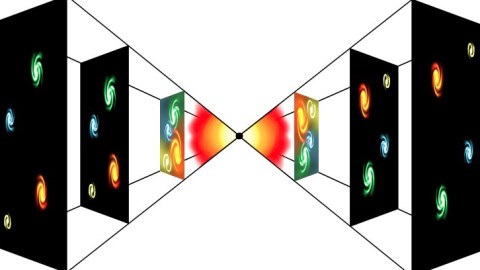
Our future fate is likely already determined. If we end in a Big Crunch, what does that mean?
The ultimate fate of the Universe is one of the biggest existential questions we can ask. Given that our Universe has been around for billions of years since the Big Bang, is filled with stars and galaxies strewn across the vast recesses of space, and appears to be expanding and cooling in all directions, there appear to be fascinating possibilities for what might arise in the future. Perhaps we’ll expand forever; perhaps we’ll cease expanding and recollapse; perhaps the expansion will speed up, tearing us apart. One possible fate is the Big Crunch, and that interests our Patreon supporter Jim Nance, who asks:
When you describe the Big Crunch, you talk about a race between gravity and the expansion of space. It’s not clear to me that if gravity wins that race, whether space stops expanding, or simply that the matter in space stops expanding. I’d love to hear your explanation of this.
This is a complex question, but the physics we know today allows us to rise to the challenge and give a definitive answer.
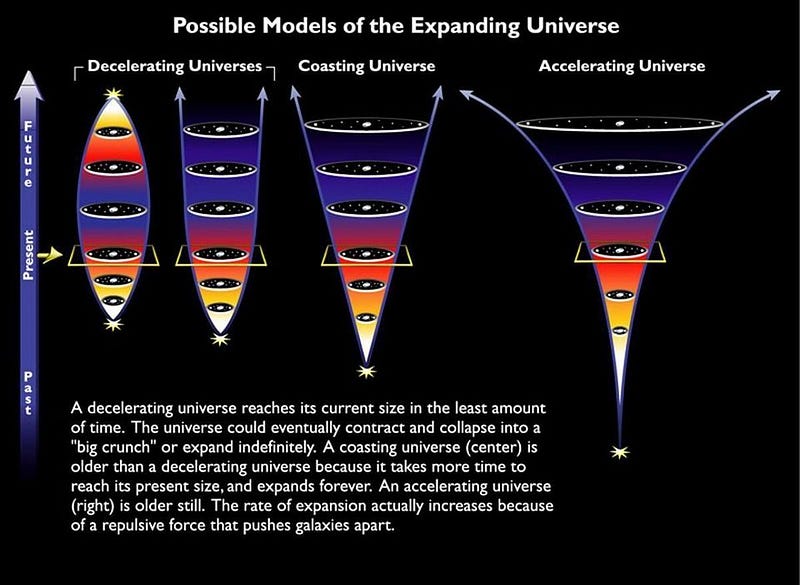
When we look out at the distant galaxies beyond our own local group, we find that the light from them is redshifted. Normally, the most important property of light is its wavelength: the distance between successive peaks or troughs in the oscillating electromagnetic fields that define a light wave. Wavelength determines light’s frequency, color, energy, and momentum.
Whenever we have an atomic transition — where electrons jump from one energy level to another — it’s accompanied by either the absorption or emission of a photon. Because those energy levels have specific values, that means the photons that are absorbed or emitted will have particular wavelengths associated with them. When you see a series of absorption or emission lines, that allows you to identify which elements are present, and in what abundance.
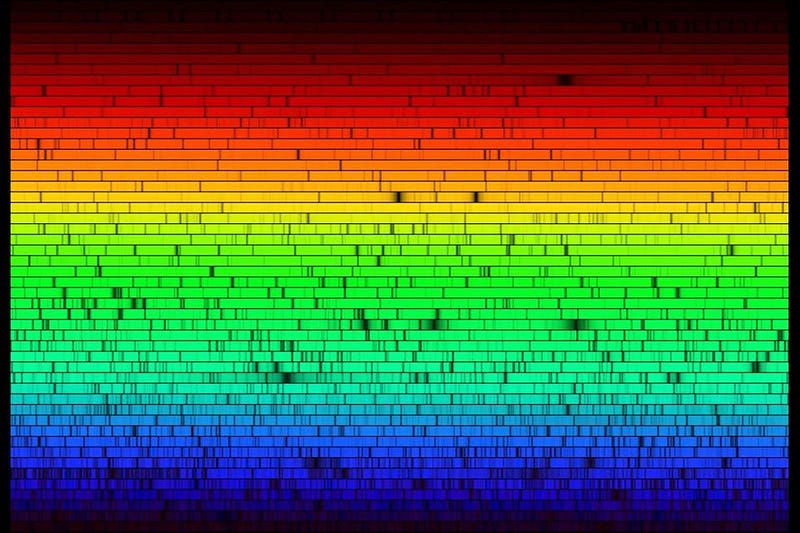
Measuring the various wavelengths of light is part of the astronomical science of spectroscopy. For any star or galaxy that we look at, we can detect the presence — if our equipment and observations are good enough — of the various spectral lines that correspond to the presence or absence of specific atoms, ions, and molecules.
But when we look at galaxies that are beyond our own, we find that those spectral signatures of absorption and emission lines are systematically shifted. For each individual galaxy we measure, there’s a unique shift that affects all of the lines equally. A very small number of the galaxies we look at appear to be blueshifted: where the light shifts towards higher energies and shorter wavelengths. But almost all of them are redshifted, and are more severely redshifted the farther away they are.

The phenomenon of galactic redshifts is an observational fact that dates back more than a century: to the work of Vesto Slipher. In the 1920s, Edwin Hubble’s work allowed us to add in the galactic distances as well, with the redshift-distance relation discovered shortly thereafter by both Hubble and Georges Lemaître. However, the cause of this wasn’t immediately clear, as there were two possible explanations.
- Redshifts and blueshifts could be caused by individual galactic motions, as galaxies moving towards us would appear blueshifted and galaxies moving away from us would be redshifted.
- Redshifts could be caused by the expansion of the fabric of space itself, with the wavelengths of light from more distant galaxies getting stretched by the fabric of the expanding Universe.

Both of these explanations could, at least in the early stages, be considered consistent with the data.
In reality, both effects exist. Galaxies do move relative to one another, as the gravitational forces from the matter in the Universe push and pull everything around. But the fabric of spacetime itself cannot remain constant, either.

In General Relativity, spacetime is a dynamic entity. When you have a Universe like ours — where matter and energy are relatively evenly distributed on the largest scales — any relativistic solution that results in a static Universe is fundamentally unstable. The Universe must be expanding or contracting, as it cannot remain in an unchanging state. We cannot necessarily know which one it’s doing from first principles alone; we require measurements to teach us what’s going on.
Thankfully, we’ve made those measurements, and the conclusion is inescapable.

Expansion it is. The fabric of our Universe, at present, is expanding. This doesn’t mean it will always expand, though, and it also doesn’t mean that there aren’t galactic motions superimposed atop the expanding fabric of space. You’ll notice, above, that very few of the galaxies we observe actually fall exactly on the best-fit line for a redshift-distance relationship.
That line corresponds to the overall expansion of space, but the actual data points can fall on either side of the line. This is due to the fact that galaxies do move relative to one another in the expanding Universe, including our own Milky Way, which moves at about 370 km/s relative to the Hubble expansion of the Universe.
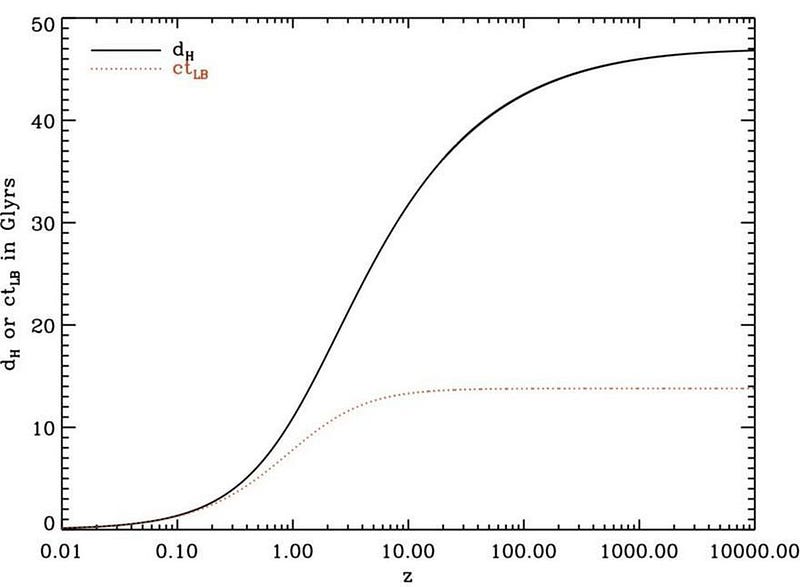
As we look to greater and greater distances (and redshifts), however, we can absolutely rule out the case where individual motions are responsible for 100% of the observed redshifts. Relativity offers different predictions at large distances for an expanding Universe as compared to a rapid motion away from us, and the data agrees with expansion, not with large-magnitude motions.
So that settles any doubts you may have had about whether the fabric of space itself is expanding: it is. The reason galaxies appear to recede from us — and from one another — is because the Universe is expanding. However, expansion isn’t the only possible solution. If we look at the equations governing the expansion of the Universe, we find something interesting: they don’t give us a value for the expansion rate. Rather, they give us a value for the expansion rate squared.
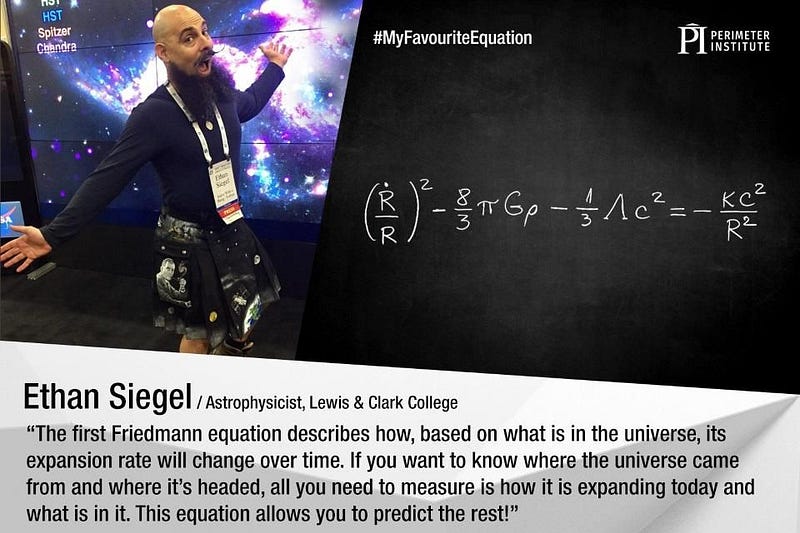
You might not see a big difference initially. If I told you the expansion rate squared was equal to 4, you’d just take the square root and tell me the expansion rate was 2.
And then I’d ask you if you were sure.
“Is he trying to trick me?” Maybe, but the point isn’t to trick you. The square root of 4 could be 2, but it could also be -2. When we solve our equations for the expansion rate, we could wind up with an expanding Universe. But we could also wind up with a negatively expanding Universe, which corresponds to a contracting Universe. Even though we know it’s expanding today, because we measure it, there’s nothing that prevents the Universe from reaching a maximum size, ceasing in its expansion, and turning around to contract.
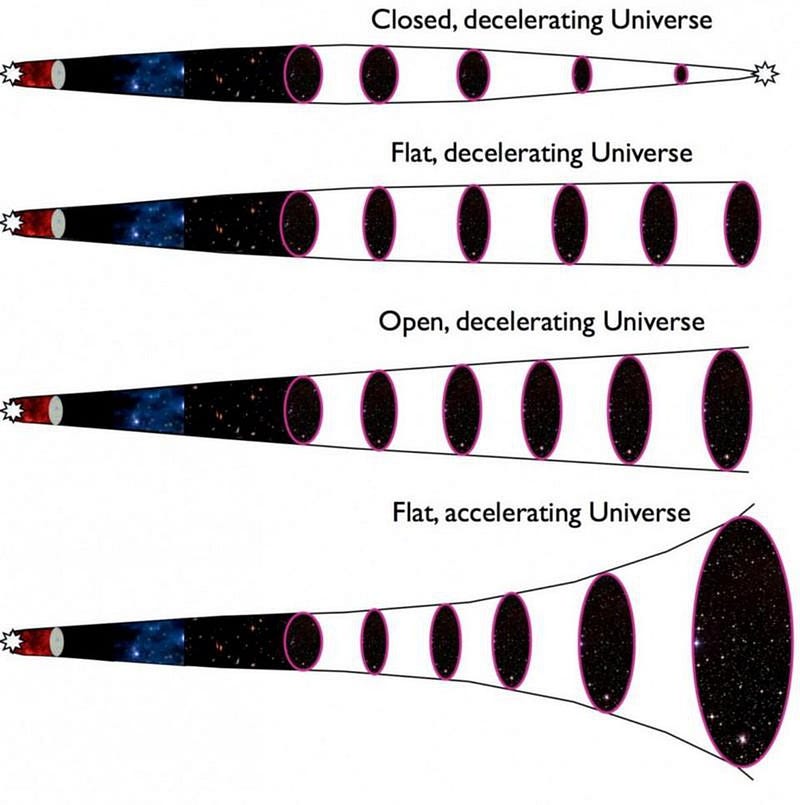
Yes, as we look out at the distant Universe, we presently see that things are continuing to expand. If the Universe will end in a Big Crunch, it hasn’t yet reached its turnaround point.
It doesn’t look likely that a Big Crunch is in store for us, either. When we measure the way the expansion rate has changed over our cosmic history, it gives every indication that the expansion rate isn’t going to drop to zero and reverse itself. The way the expansion rate changes over time is determined by the total amount and types of matter and energy present within it. Because our Universe has too little matter, too little radiation, and too much dark energy, it looks like we’ll keep on expanding forever.
Unless, of course, dark energy is dynamical, and capable of changing over time.
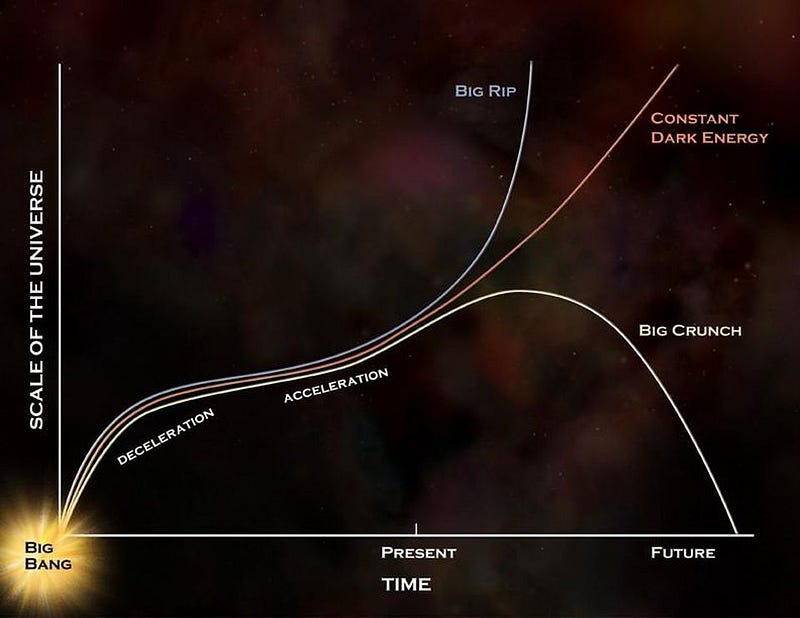
If dark energy’s energy density changes over time in any number of particular fashions, it can cause our Universe to end in a Big Crunch. We often take it as a given that our Universe will end in a Big Freeze, owing to the apparent acceleration of distant galaxies away from us, but there are still five viable, possible fates for our Universe. As I’ve written previously, dark energy could weaken and decay as the Universe further expands:
If it decays away to zero, it could lead to one of the original possibilities expressed above: the Big Freeze. The Universe would still expand, but without enough matter and other forms of energy to recollapse.
If it decays away to become negative, however, it could lead to another of the possibilities: a Big Crunch. The Universe could be filled with energy intrinsic to space that suddenly switched signs and caused space to recollapse. While the timescale for these changes is constrained to be far longer than the time since the Big Bang, it could still occur.
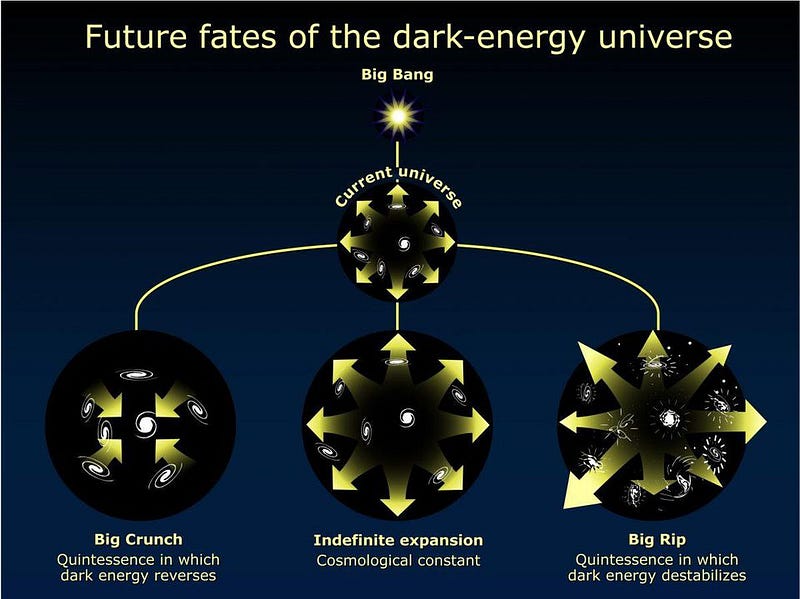
But the link between all the matter and energy in the Universe, on one hand, and the expansion of the fabric of space itself, on the other, cannot be denied. We live in a Universe that, on the largest scales, is isotropic, homogeneous, and governed by General Relativity. In a very general sense, that means there’s a connection between how the Universe expands and what’s present within it.
If all the matter in the Universe stops expanding away, reverses itself, and begins to recollapse towards us, then that necessitates that the fabric of space is going to recollapse, too. There truly is a cosmic race occurring: between the expansion of the Universe and the force of gravity. Right now, it looks like the expansion’s going to win, but if dark energy is dynamical, that throws the outcome into doubt. If gravity does wind up winning, and the Big Crunch is our ultimate fate, someone, a long time from now, might live to see the entire shebang recollapse into a singular state. We can only imagine what that might lead to.
Send in your Ask Ethan questions to startswithabang at gmail dot com!
Ethan Siegel is the author of Beyond the Galaxy and Treknology. You can pre-order his third book, currently in development: the Encyclopaedia Cosmologica.




